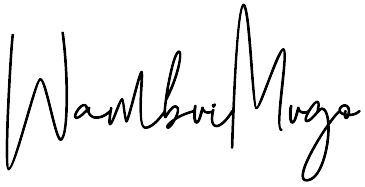Storytelling Techniques to Captivate and Engage Your Audience Like Never Before

Did you know our brains are hard-wired to process and store information through stories?
People, including your audience, are naturally drawn to stories because they connect with our emotions, make ideas easier to understand, and help us relate to others.
Storytelling isn’t just some fancy buzzword—it’s a superpower every freelancer needs.
In this post, we’ll dig into some practical tips on how to use storytelling to grab your audience’s attention and keep them hooked. Let’s jump in!
What is Storytelling?
Storytelling is the art of sharing experiences, ideas, or information in a way that captures attention and connects with people.
Why is Telling Your Story Powerful?
In a crowded marketplace, it’s not enough to simply list your skills or showcase your work. You need to captivate your audience with compelling narratives that make you stand out.
Storytelling helps you connect on a deeper level, transforming your projects and experiences into engaging stories that resonate with clients.
It’s what turns a standard pitch into a memorable experience, making you more relatable and memorable in a sea of competition.
Whether you’re writing a blog post, crafting a social media update, or pitching a client, a well-told story can make all the difference.
How To Tell a Compelling Story

Know Who You’re Talking To
Before you start spinning your tale, think about who’s on the other side.
Who are they? What do they care about?
Understanding your audience is the first step to telling a story that sticks.
This might mean customizing your story to fit potential clients who appreciate your expertise and reliability.
Quick Tip: Create a mental picture of your ideal reader. What problems are they facing, and how can your story help solve them?
Start with a Bang
You have just a few seconds to grab your reader’s attention—so make it count! Think TED Talks. I know they can seem pretty intimidating, but you’ll notice almost all of them have a catchy opening line that grabs the listener’s attention.
A strong opening sets the tone for the whole story.
Whether it’s a question, a bold statement, or a surprising fact, your hook should make the reader curious to know more.
Example: “Have you ever wondered what makes a YouTube video go viral?”
Make It Relatable
People love stories they can see themselves in.
Use situations that your audience can easily connect with.
This builds an emotional bond and makes your message more memorable.
Quick Tip: Use simple, everyday language that your audience can relate to.
For example, if you’re talking to small business owners, mention the daily hustle of wearing multiple hats.
Show, Don’t Tell
This old piece of writing advice is gold.
Instead of just telling your audience how to feel, show them through vivid descriptions and actions. Paint a picture with your words.

Example: Instead of saying, “I was stressed,” try, “My heart was racing as the clock ticked down, each second feeling like a punch in the gut.”
Keep Your Story Structured
Every good story has a beginning, middle, and end. Your narrative should guide your reader smoothly from one part to the next.
Start by setting up the problem, move on to the challenges faced, and then wrap it up with the resolution or lesson learned.
Quick Tip: Think of your story as a journey. Start with the setup, introduce a conflict, and then bring it home with a satisfying conclusion.
Use Real-Life Examples
Sharing real-life stories makes your content more credible and relatable.
It adds authenticity and helps your audience see how your advice can work in the real world.
Example: “I once worked with a client who was overwhelmed by deadlines. By the end of our project, not only did we organize their schedule, but they also saw a 30% boost in productivity.”
Engage the Senses
Good stories pull you in by engaging your senses.
Don’t just tell your audience what’s happening—describe how it looks, sounds, and feels.
Quick Tip: Add sensory details to make your story come alive.
For instance, “The smell of fresh coffee filled the room as I typed out the last few words of the proposal.”
Talk to Your Reader
Address your reader directly and use a conversational tone.
This makes your story feel more personal, like a chat with a friend.
Example: “You know that feeling when your to-do list is a mile long? Let me show you how I managed to get everything done without losing my mind.”
Wrap It Up with a Strong Finish
Your story should leave a lasting impression.
Whether it’s a powerful takeaway, a call to action, or an inspiring message, make sure your ending resonates with your reader.
Example: Watch now: How to Use Chat GPT for Beginners
Types of Stories
1. Client Stories
As a freelancer, you believe in the value of your work—you put your heart and soul into every project. However, for potential clients on the outside looking in, the stories you tell about your services may seem biased. They know you’re promoting your skills, so of course, you’ll highlight the positives.
For example, if you share a portfolio showcasing your best work, clients might appreciate it, but they also expect you to present your strengths.
On the other hand, if you share testimonials or case studies from past clients who were satisfied with your work, it adds credibility and makes your services seem more trustworthy.
Reach out to previous clients for honest feedback and use their experiences as the foundation of your marketing. Stories from satisfied clients are likely to resonate more deeply with potential customers than your own self-promotion.
2. Value-Driven Stories
It’s important to communicate the unique value you bring to the table.
What sets your services apart from others?
Why should clients choose you over someone else?
These are the questions you need to answer through your storytelling.
Focus on the tangible benefits your clients receive when working with you. Maybe it’s the quick turnaround time, the personalized approach, or the expertise in a niche area. .
Share real-life examples that show these aspects. Including quotes from clients who have experienced this value can strengthen your narrative.
For example, if you’ve helped a client achieve their goals faster or more efficiently, create a story around that. Explain the impact your work had on their business or project.
3. Journey Stories
Your freelance journey is a story in itself. From the challenges you faced when starting out to finding your niche and establishing a steady stream of clients, each step of your journey adds depth to your narrative.
Instead of just listing your skills and services, start with the why.
Why did you choose freelancing?
What drives you to keep going?
Sharing your journey helps clients connect with you on a personal level. They get to see the passion behind your work, which can be more compelling than just showcasing your portfolio.
For example, if you pivoted from a traditional job to freelancing to pursue your passion, that story can resonate with potential clients who value dedication and authenticity.
When you share the ups and downs of your journey, it makes your brand more relatable and human.
4. Success Stories
Everyone loves a success story, especially when it comes to freelancing where the market can be unpredictable.
Sharing your successes can inspire confidence in potential clients, showing them that you have what it takes to deliver results.
Share moments when you exceeded client expectations, took on challenging projects, or helped a client achieve great milestones.
These stories demonstrate your capabilities and give clients a reason to trust you with their projects.
For example, if you helped a small business improve its online presence, resulting in increased traffic and sales, turn that into a success story. Use specific examples and, if possible, include metrics to back up your claims.
This builds credibility and also shows the results of your work.
5. Lessons from Failure
While it might seem counterintuitive, sharing stories of failure can be a powerful way to connect with potential clients.
Everyone experiences setbacks, and acknowledging your challenges can make you more relatable and trustworthy.
Instead of hiding your past mistakes, use them as learning experiences. Talk about a project where you faced challenges or didn’t meet expectations, and more importantly, how you recovered and what you learned.
This shows clients that you’re resilient and adaptable—qualities they appreciate in a freelancer.
For example, if you had trouble managing your time on a big project but later found a better way to handle your work, that’s a story worth sharing. It shows you’re honest about your flaws and committed to improving and delivering better results in the future.
The Bottom Line
Your story is your brand, and how you tell it sets you apart from the rest. Every project, every client interaction, and every lesson learned contributes to the unique narrative that defines you as a freelancer.
It’s not just about what you do—it’s about how you communicate your value, your passion, and your journey.
The journey to mastering storytelling doesn’t end here—it’s just the beginning. As you continue to grow and evolve, so will your story.
If you’re hungry for more ways to sharpen your narrative and stand out, the Freelance Mastery Hub is your next stop.
You’ll immerse yourself in storytelling methods, draw wisdom from experienced professionals, and uncover new ideas to boost your freelance journey.











